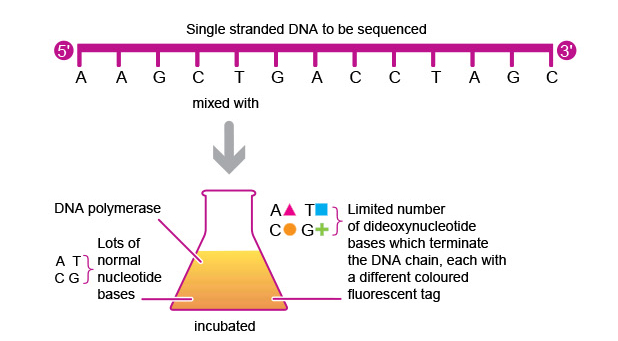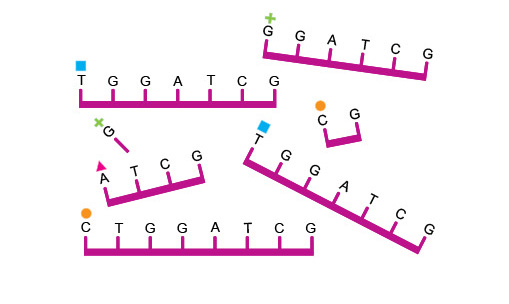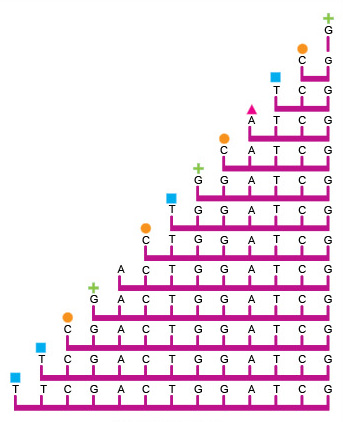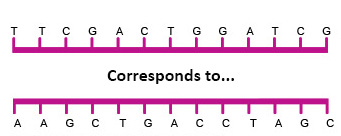This topic takes on average 55 minutes to read.
There are a number of interactive features in this resource:
 Biology
Biology
 Human biology
Human biology
When DNA sequencing first began, every step was done individually by scientists. The first automated method for sequencing the DNA was the Sanger method, used in the Human Genome Project to sequence the human genome for the very first time. Although genomes are now analysed using even more automated, faster and cheaper next-generation sequencing technologies, these new machines still rely heavily on the basic processes of the Sanger method outlined here.
A flask is set up containing the single stranded DNA which is going to be sequenced along with the enzyme DNA polymerase, an excess of normal nucleotide bases - adenine (A), thymine (T), guanine (G) and cytosine (C) - and a limited number of dideoxynucleotide bases. The addition of a dideoxynucleotide base at the end of a chain stops the addition of any more bases to that end of the chain. Each different type of dideoxynucleotide base (A, T, G and C) has a different coloured fluorescent tag (often four separate flasks are set up, each containing DNA, DNA polymerase and normal bases, but containing only one type of dideoxynucleotide base). Flasks are incubated at the optimum temperature for the reaction.

The DNA polymerase starts to build up new DNA strands based on the single strand template. Each time a dideoxynucleotide base is incorporated, the chain is terminated – no more bases can be added. As a result many DNA fragments are made, all of different lengths as the chain terminating bases are added at random during the process.

The DNA fragments undergo gel electrophoresis which separates them out. The smallest fragments travel the furthest through the gel, with the larger fragments travelling least. The fluorescent markers can then be used to identify the final base on each of the fragments.

Reading the sequence of bases from the electrophoresis plate lets us see the sequence of the new complementary strand of DNA which has been made. This provides all the information needed to determine the sequence of the original DNA.
